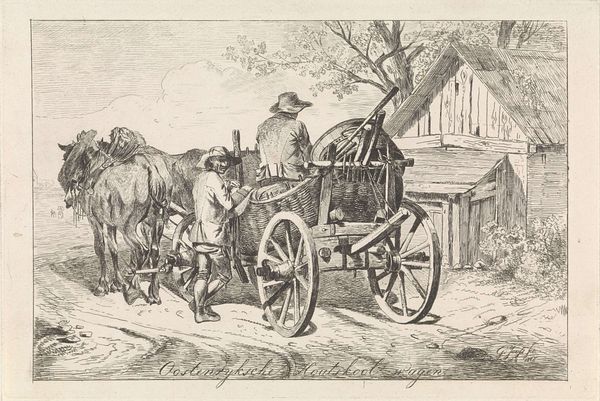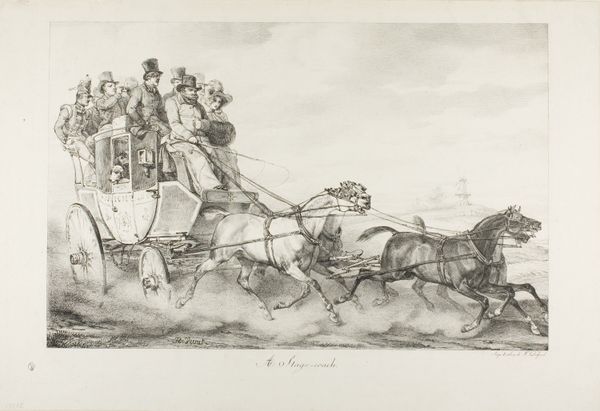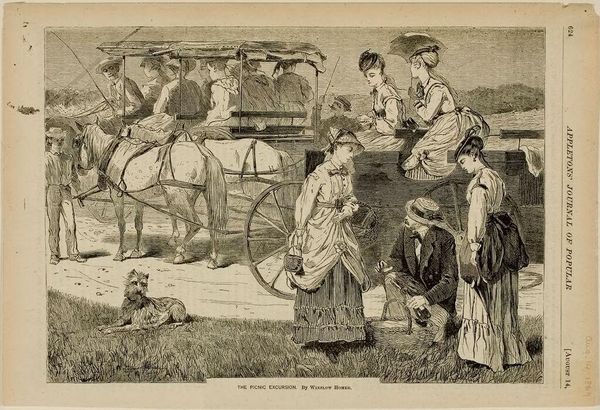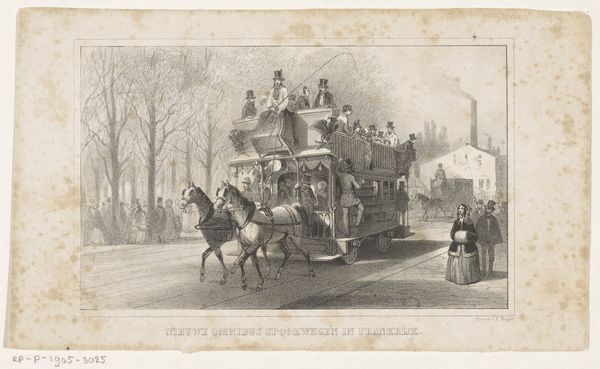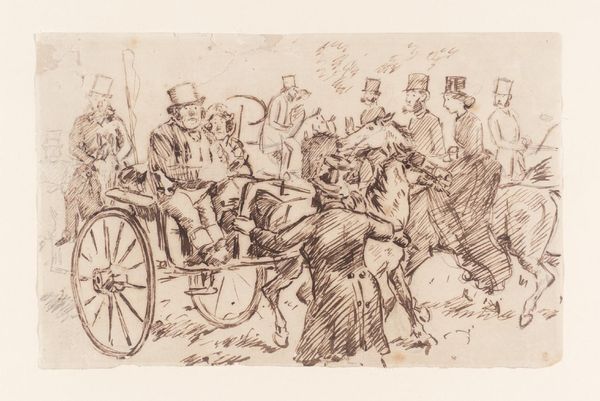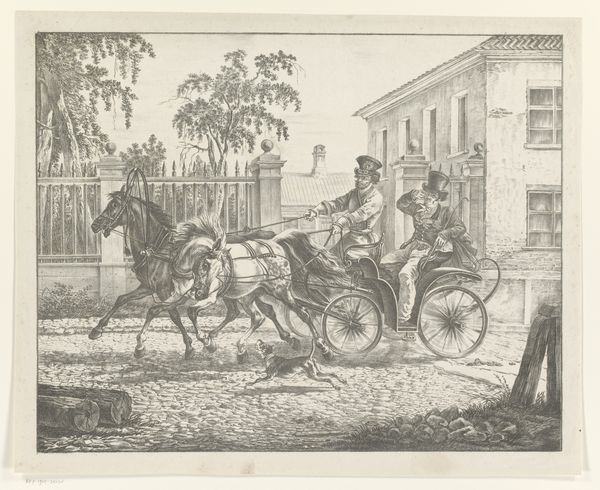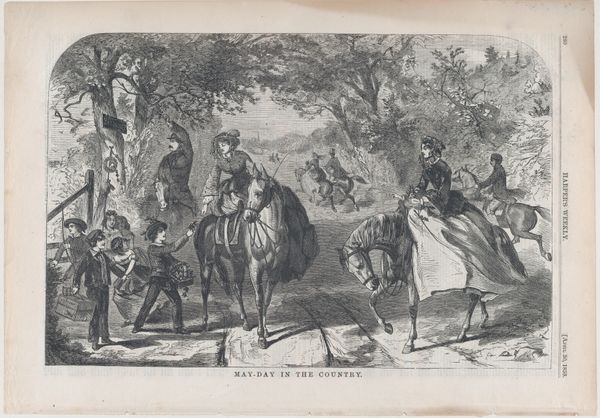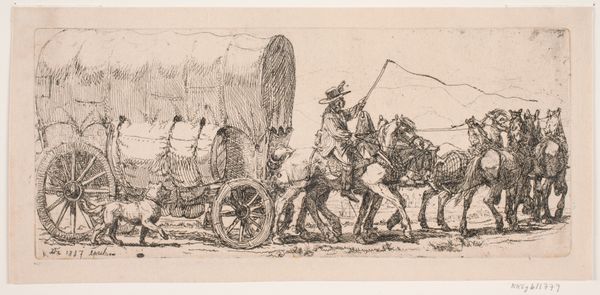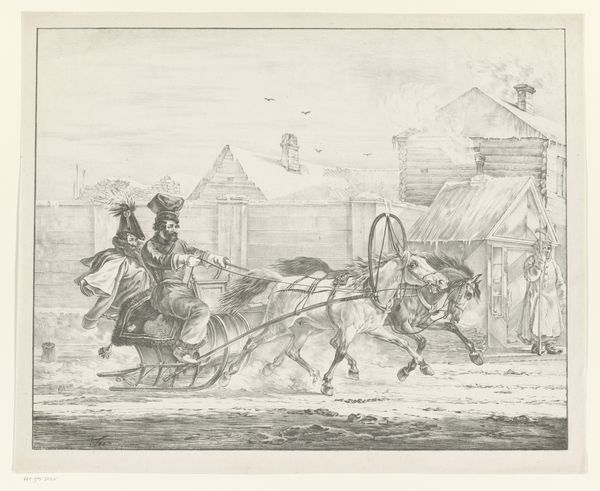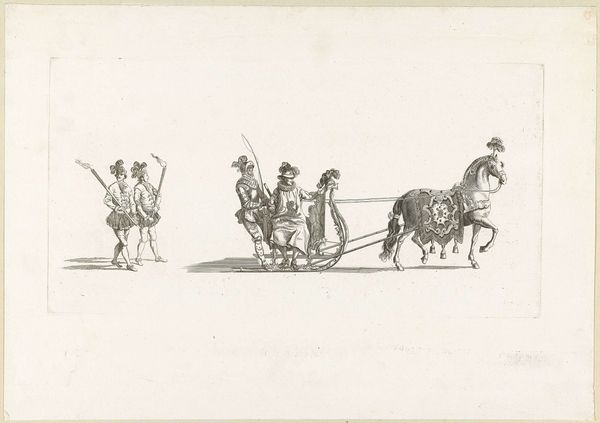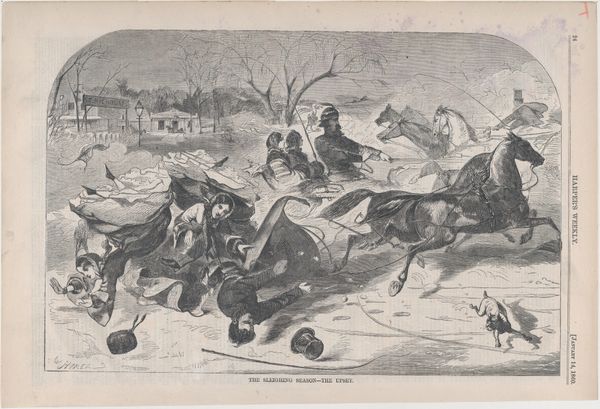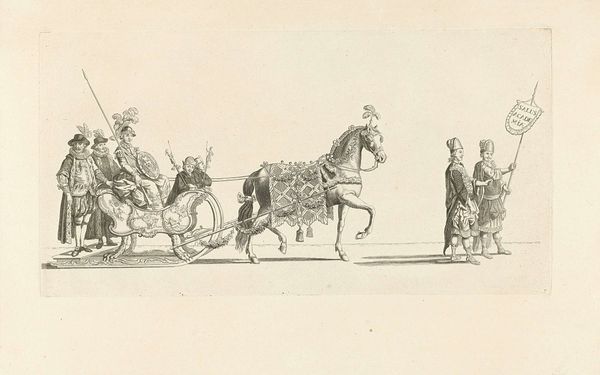
drawing, graphic-art, print, ink, engraving
#
drawing
#
graphic-art
# print
#
pen sketch
#
landscape
#
ink
#
genre-painting
#
engraving
#
realism
Dimensions: height 158 mm, width 246 mm
Copyright: Rijks Museum: Open Domain
Editor: This etching from between 1859 and 1889, "Reclame voor tandpoeder van Elias Stark" (Advertisement for tooth powder by Elias Stark) depicts a horse-drawn cart carrying an oversized container of tooth powder. I’m struck by the implied labor – the man pushing the cart, the figures driving the horses. How does that labor tie into the message of the advertisement itself? Curator: Well, considering this as a materialist piece, it’s interesting to see labor literally “pulling” consumerism. The exaggerated size of the tooth powder container transforms it into an unwieldy commodity, almost mocking the very act of buying and selling. What's also striking is how the work, the process of making a product desirable, is so openly displayed. Editor: So, it's less about promoting the product's benefits, and more about showing the *effort* of promotion? The materiality of advertising itself? Curator: Precisely. The ink and engraving are themselves products of labor, mirroring the scene. Note the tension: a hand-pushed cart contrasted against the industrial promise hinted at by the scale of production. The "Stark's Tandpoeder" becomes not just a good, but an emblem of the social forces driving consumption. The act of pulling this massive advertisement across the countryside highlights the economic engine – that combination of raw labor and, for the elite, leisure. Who benefits here, ultimately? Editor: I guess initially I was thinking about just manual labor. But you're making me realize it speaks more broadly to the labor inherent to a capitalist economy: manufacturing demand. Curator: Indeed! And it subtly prompts us to consider who performs that labor, and who ultimately profits from it. Do you think that the landscape backdrop contrasts or reinforces that idea? Editor: It feels both contradictory and harmonious, actually! Natural yet clearly traversed for marketing. Thinking about it, the piece is almost less about what's being sold, and more about what *selling* entails. Thank you! Curator: My pleasure! It’s fascinating how art can make us question the most everyday economic acts.
Comments
No comments
Be the first to comment and join the conversation on the ultimate creative platform.
